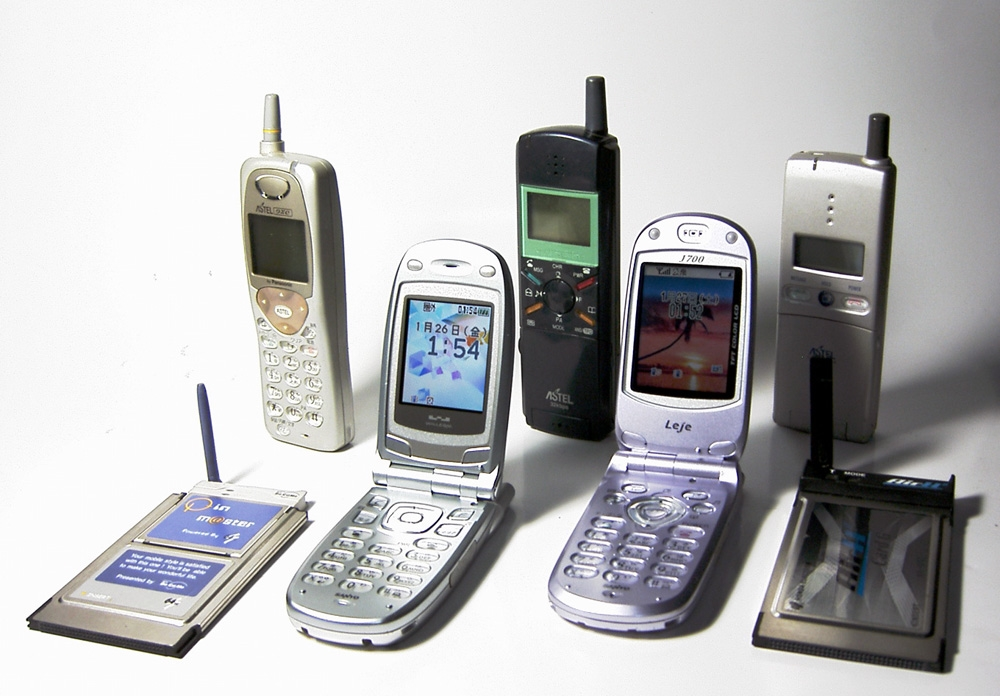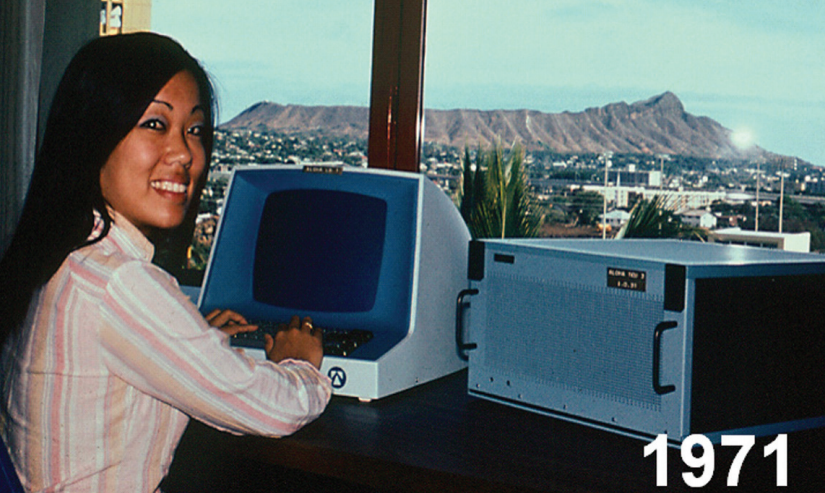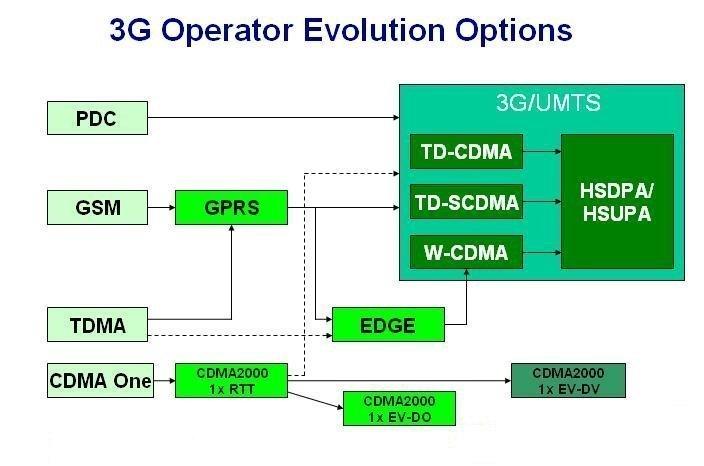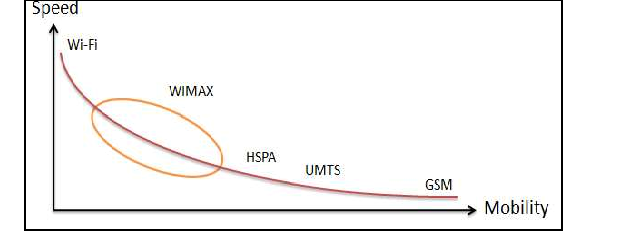
The first transatlantic cable
connected Europe and the United States in 1858, replacing shipping traffic, and the time required to establish communications between the continents was reduced from ten days to several hours. By 1965, four hundred telephone channels had already been laid between the two continents.
Today, we can not only instantly call any country, but also transmit video and photos, receiving data even from space. All these achievements owe their appearance to the evolution of communication. In the difficult process of competitive struggle, some technologies inevitably lost. But were they really worse, or did the communication technologies "die" for other reasons?
ALOHAnet
This is the first computer network with wireless data transmission technology, which
became the basis for the subsequent development of Ethernet, Wi-Fi and cellular networks.
ALOHAnet
was developed by a group of scientists at the University of Hawaii who used ultra-high-frequency radio stations to create a network. The development team decided that it was necessary to find a way to use one frequency for each communication terminal. In other words, all terminals had to speak on the same "wire" at the same time.

(
c )
To prevent the "collision" of several messages, the first protocol of competitive access to the communication channel was invented, which later became used in Ethernet and Wi-Fi networks.
The ALOHAnet network is ahead of its time and has had a long-term impact on future technical solutions. Network development began in 1968, and in 1971, ALOHAnet began operations in the state of Hawaii. However,
no company took advantage of it for commercial purposes - no one at that moment could appreciate what important task the new technology was solving.
Code Division Multiple Access (CDMA)

(
c )
GSM and CDMA are different ways of achieving the same goal. Ultimately, the answer to the question “what is better?” Lies in the quality of the operator’s infrastructure - who has a better network and broader coverage, he becomes the winner. Technically, none of these standards significantly exceeds the other.
The difference between GSM and CDMA was in data transfer methods: GPRS (General Packet Radio Service) in GSM provided slower bandwidth than CDMA (1xRTT - One Times Radio Transmission Technology), which
had the ability to work at speeds up to 144 Kbps.
But CDMA had its drawbacks: 1xRTT technology requires a dedicated connection to the network, while GPRS sends packets, so accessing data on GSM phones does not block voice calls, like
on CDMA phones .
In addition, in GSM you can easily change the SIM card of the phone. In CDMA networks, the necessary data was
written (flashed) into the phone, and the SIM card was missing. CDMA-phone
could not be used in roaming. SIM analog for CDMA phones - the so-called
R-UIM - appeared only in 2002.
GSM and CDMA are incompatible with each other, so users are “locked” in this network. While Europe quickly switched to GSM, in the US, subscribers of several operators were “hostages” of CDMA. At the same time, communication in Europe has become cheaper and coverage is better.
A more sophisticated CDMA required large computing power and powerful financial investments, while the GSM infrastructure was already established in Europe and Asia and did not require significant financial investments to maintain. All these factors led to a gradual decline in interest in the development of CDMA.
In 1996, the mobile operator Sonnet was the first in Russia to
receive a license to provide communication services in the CDMA standard. Two years later, on the basis of Qualcomm equipment, the CDMA network was launched in Moscow. In the second half of the 90s, scattered CDMA networks began to appear throughout Russia. By 2003, 350,000 CDMA users were registered (less than 2% of the entire Russian subscriber base), and 40% of them were located in the Central Federal District.
The Sonnet network
ceased to exist in 2004 due to the refusal to extend the license for the 800 MHz frequency band, where the original CDMA 800 network operated. It was planned to use these frequencies for the development of digital television.
In 2002, the
network built according to the CDMA2000 standard in the 450 MHz band started operating; Delta Telecom became its operator. At launch, the company claimed that "this technology [CDMA2000] is 7.5 times more efficient in using frequency resources than GSM."
However, the growth rate of the subscriber base
began to decline and by 2006 "did not meet even the most pessimistic forecasts." CDMA extinction stretched out for many years - the last standard operator in our country
stopped working in 2018.
Circuit Switched Data (CSD)
Data transmission technology from the 1990s, which was
used in GSM networks before the advent of GPRS. For the first time, it allowed to transmit digital data and connect to the Internet (with per-minute charging) at a speed of 9.6 Kbps.
Prior to CSD, data transmission in mobile phones went (when connected to an external modem) at speeds of up to 2.4 Kbps (from the
definition of the GSM
standard from May 1996).
Improved technology has led to the emergence of High-Speed Circuit-Switched Data (HSCSD), in which the
speed increased to 14.4 Kbps, and through the use of four parallel channels, the
speed increased to 57.6 Kbps.
CSD technology finally ceased development when most telecommunications companies abandoned CSD support and switched to GPRS and EDGE (E-GPRS), which use more advanced signal coding techniques to increase throughput.
Worldwide Interoperability for Microwave Access (WiMAX)

(
c )
For the fourth-generation (4G) market, several wireless standards have been developed, including WiMAX. This technology had many advantages: bandwidth
up to 75 Mbit / s , radius of action -
25-80 kilometers , ease of deployment and easy scalability.
Of all the standards developed for 4G, WiMAX is the closest (by technology) to Wi-Fi. The standard,
developed in 2001, is sometimes called "
Wi-Fi on steroids " for its much higher bandwidth compared to Wi-Fi networks.
In 2005, the standard was updated to 802.16d (“
Fixed WiMax ”), providing a stunning speed of 25 Mbit / s for that time. This made it possible to conduct video conferences without lags and watch streaming video in HD quality.
Upgrading the standard to 802.16m (“
Mobile WiMax ”) in 2011 provided a speed of up to 1 gigabit per second. It should be noted that the bandwidth of the WiMAX network depends on the number of users - the more connections, the lower the data transfer rate.
The WiMAX standard has for some time been considered a good substitute for traditional terrestrial cable infrastructure. Due to the large range and relatively low cost of implementation (compared to 3G, xDSL telephone network or hybrid opto-coaxial network), the technology could not only successfully compete with other standards, but also solved the “last mile” problem in remote regions.
Recall that the
last mile in the field of communications is the channel connecting the last network node of the provider and the client’s final equipment. Such a channel can be created using xDSL, WiMAX, FTTx (fiber to the x), Wi-Fi technologies.
The first WiMAX network in Russia was
launched by Yota in 2008 in Moscow and St. Petersburg. A total of 150 base stations operating in the 2.5-2.7 GHz band were installed in the two cities. In the first year, the number of users of the new technology has reached several hundred thousand.
In 2011, analysts at J'son & Partners
expressed a pessimistic assumption that LTE would “kill” WiMAX in the coming years, but in Russia, the network was doing great - WiMAX operators had big plans for further development. There were no problems with the frequency license faced by the CDMA operators: the frequencies 2.3, 2.5 and 3.5 GHz
were completely open for the deployment of the mobile WiMAX variant.
In 2012, Yota refused WiMAX, successfully “transferring” its users to the
first LTE network in Russia . LTE base station coverage provided a more comfortable service area and provided Yota customers with a qualitatively new level of communication compared to WiMAX.
To date, large companies have already
curtailed the development of WiMAX software and switched to LTE.
Rare Asian standards: PHS and PDC
Developed in 1989, the Personal Handyphone System (PHS) standard in Nippon Telegraph and Telephone Corporation was actively implemented in Japan and other Asian countries. PHS
used compact cells with base stations with a capacity of up to 500 mW and a range of up to hundreds of meters (some models had a radius of up to 2 km).
It all started successfully: easy deployment of networks, low fixed tariffs and good communication even in the subway - all this has a positive effect on business development. However, competing standards quickly achieved the same quality of communication, and the difference between PHS and GSM phones was erased.
In 2010, the number of PHS users was
4 million subscribers (not all of them were active). At the same time, even in 2011, there
were phones supporting PHS.
Another standard popular in Japan is Personal Digital Cellular (PDC). Refers to the generation of 2G and
provides a data transfer rate of 11.2 Kbps. Japan could participate in the development of an international communication standard, but chose to support the development of the national telecom industry.
When the PDC appeared, he quickly occupied the entire domestic market in Japan. This led to the
incompatibility of Japan’s
telecommunications products with GSM, which became dominant in the 2G era. Japanese communications companies were thus cut off from the huge overseas market.
Long-term contributions to their own infrastructure also made Japanese companies too vulnerable in external competition. Not only companies promoting GSM were able to take advantage of this situation: the W-CDMA standard was also
widely adopted in Japan.
The Wideband Code Division Multiple Access (W-CDMA) technology
provides broadband access at speeds up to 2 Mbps. Those who travel a lot around the world found themselves in situations where a mobile phone could only connect to the W-CDMA network - this standard is still relevant. For 2016, W-CDMA
covered about 65% of the world's population (LTE - 40%, and GSM - more than 90%).
Other "forgotten"
It may seem that old technologies have long been outlived and are mentioned only in textbooks. But this is a misconception: according
to the Pew Research Center, back in 2015, 3% of Americans used dial up to connect to the Internet. This means that millions of people used the network at speeds up to 56.6 Kbps.
There are also rare new (or updated) niche communication standards. Everyone has heard about 5G, but on the market there is, for example,
DECT-2020 - a promising standard that represents the next step in the evolution of
old wireless telephones .